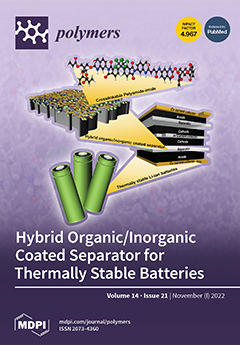In this study, the fire behavior variation of unenergized polyvinyl chloride (PVC) copper wires subjected to overload with different currents was investigated by a cone calorimeter. Overload currents were selected from 1 times safe-rated current (
Ie) to 3.5 times
Ie to obtain tested sample wires. The mass fraction, time to ignition (TTI), heat release rate (HRR), gas emission, and residue were measured. If the current flowing through the wire increased up to 3.5 times
Ie, the TTI of this unenergized wire increased drastically and the peak HRR (pHRR) decreased notably so that the flame growing index (FGI) reduced considerably. When the wire carried less than three times
Ie, the FGI remained stable. For all overloaded PVC copper wires, the increase in the heat flux resulted in a higher pHRR and a lower burning duration. However, regardless of the external heat flux exposure, the FGI of copper wires overloaded at 3.5 times
Ie was lower than that of copper wires carrying less than other times
Ie. Moreover, the consumption of O
2 and generation of CO
2 as the heat flux varied were consistent with that of the HRR. Opposed to expectation, the flame propagation of unenergized PVC copper wires would decline in a fire, if the wire has been damaged by overload with some currents.
Full article






